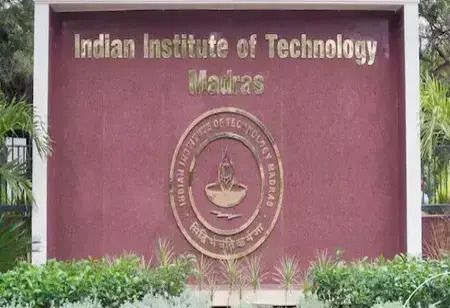
IIT Madras and Ohio State Researchers Develop AI Framework


In a major advancement for computational drug discovery, scientists from the Wadhwani School of Data Science and Artificial Intelligence (WSAI), IIT Madras, and The Ohio State University, USA, have created a groundbreaking Artificial Intelligence (AI) framework .
It is capable of generating new, synthesis-ready drug-like compounds, which could significantly reduce the initial phases of drug development.
Called ‘PURE’ (Policy-guided Unbiased Representations for Structure-Constrained Molecular Generation), the framework models real-world chemical synthesis to create molecules that are both efficient and practically synthesizeable in laboratory environments.
This advancement may expedite therapies for conditions such as cancer and antibiotic resistance, tackling a major challenge in pharmaceutical R&D: converting computational findings into feasible lab candidates.
Also Read: SCO Summit 2025: Outcomes of Modi-Xi Meeting
The research was written by Abhor Gupta, Barathi Lenin, Rohit Batra, Prof. B. Ravindran, and Prof. Karthik Raman from WSAI, IIT Madras, along with Prof. Srinivasan Parthasarathy and Sean Current from the Computer Science and Engineering Department, The Ohio State University.
Describing the innovation, Prof. B. Ravindran, Head of Wadhwani School of Data Science and AI (WSAI) at IIT Madras, stated, “Artificial intelligence is transforming discovery fundamentally, with drug design leading this change.” What sets PURE apart is its use of reinforcement learning not only to enhance metrics but also to comprehend how molecules change, enabling AI to think like a chemist.
Also Read: A Brief History of India's Transformation Under PM Narendra Modi
Additionally, Prof. Karthik Raman from WSAI at IIT Madras remarked, “PURE represents chemical space without favoring particular metrics, anchoring molecular generation in authentic synthesis routes.” This method guarantees that the produced molecules are not only original but also feasible for synthesis in laboratories.
Prof. Srinivasan Parthasarathy from The Ohio State University noted the worldwide significance of the framework, stating, “PURE provides transformative advantages for initial pharmaceutical research.”
It can aid in finding alternative, more effective drug candidates, particularly where current options are limited by resistance or toxicity. In addition to pharmaceutical development, PURE also paves the way for advancements in materials.
Also Read: 5 Latest CHRO Appointments in Global Corporations
By integrating self-supervised learning with policy-driven reinforcement learning, PURE acquires the ability to replicate the sequential molecular changes observed in real chemical reactions. In contrast to conventional AI models that rely on scoring functions, PURE independently learns chemical similarity and suggests viable synthetic pathways for the molecules it creates.